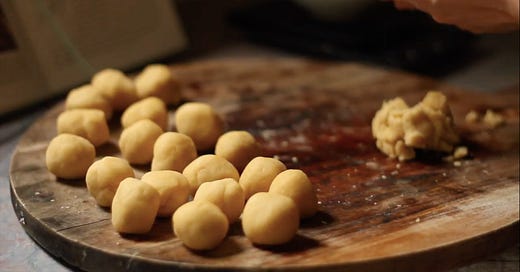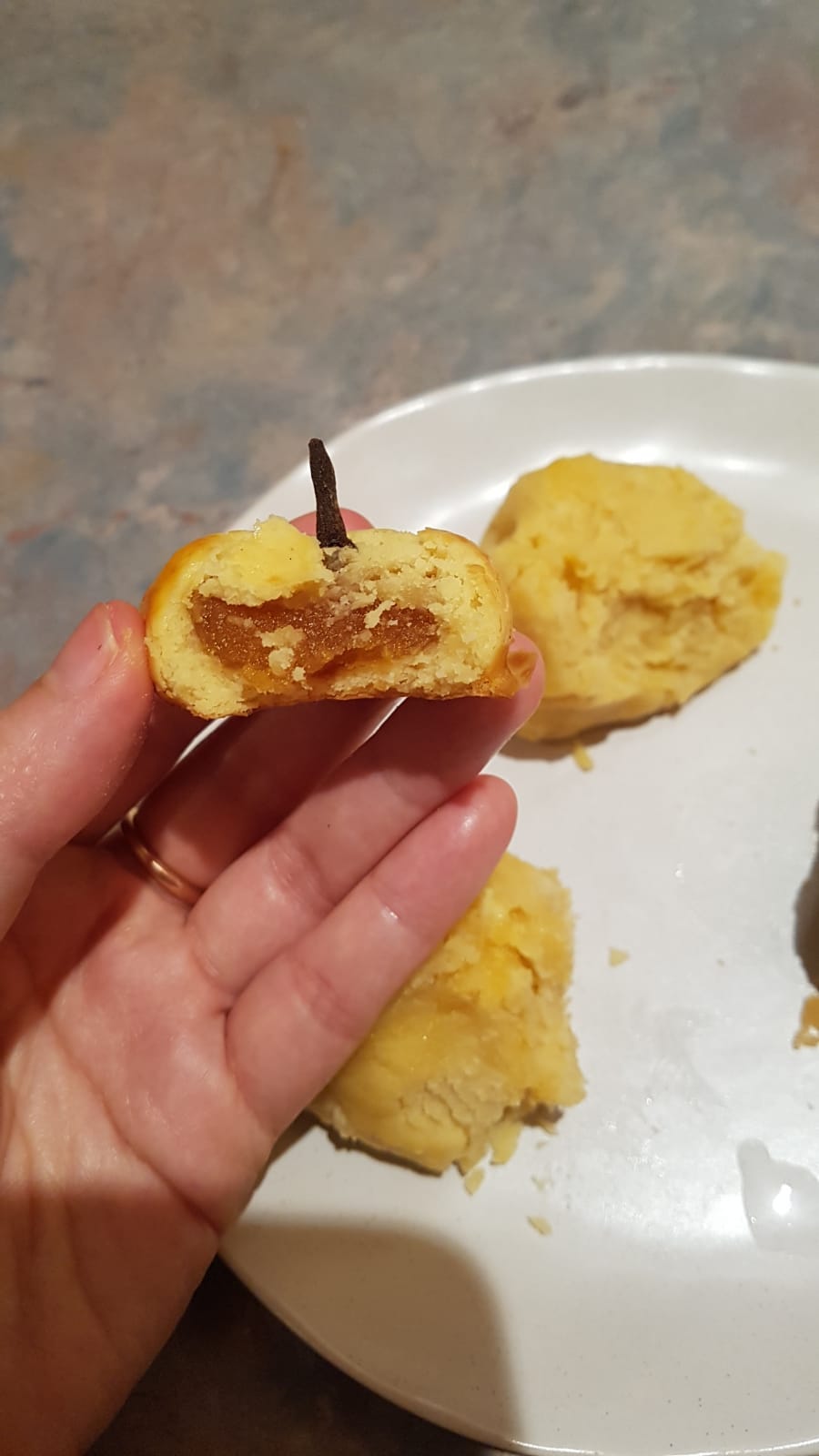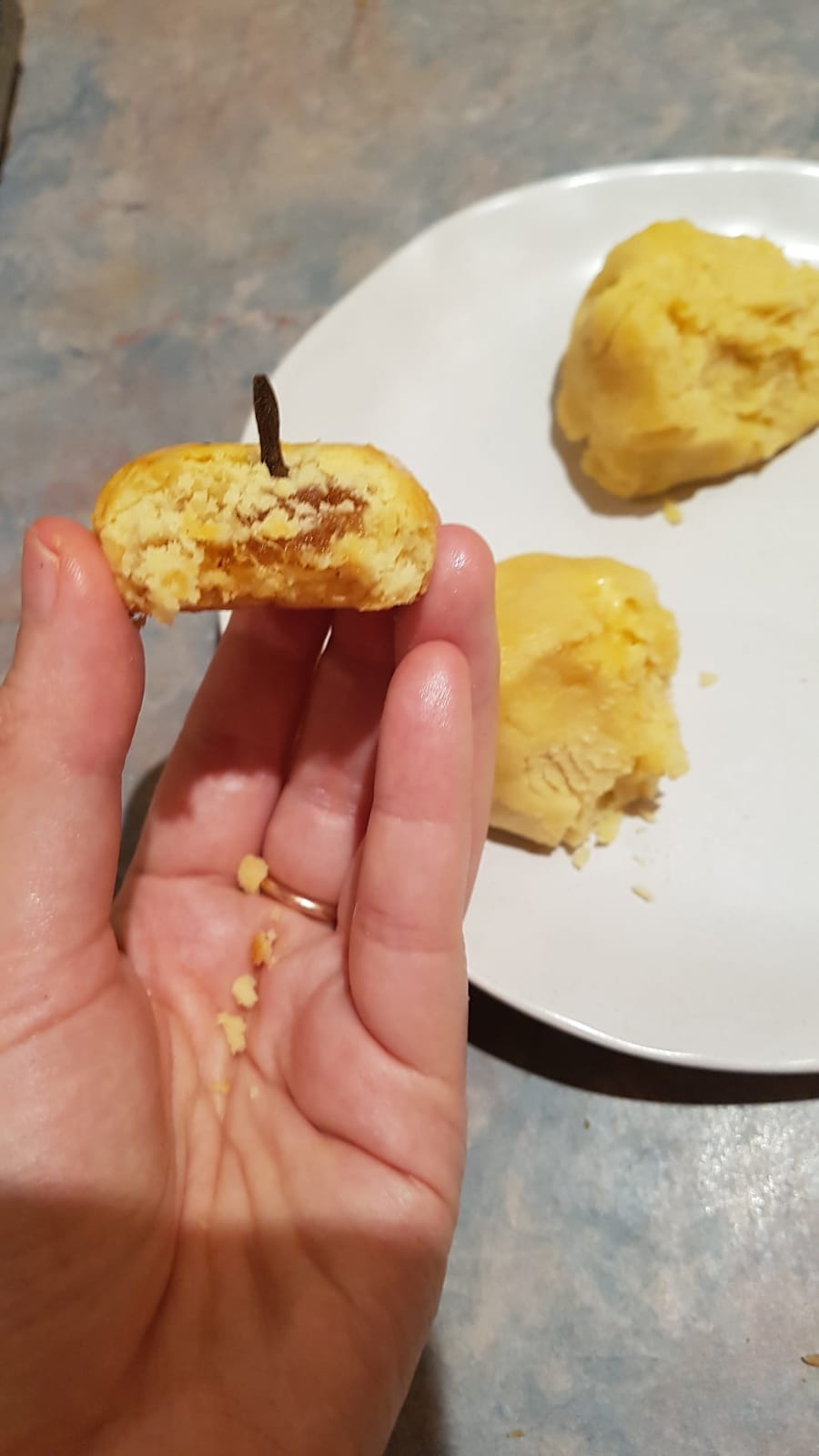A deep dive: pineapple tart pastry
Part III: All about what fat, flour, and mixing method to use.
Welcome to the third newsletter of the pineapple tart-making series! If you are new to this newsletter, you will be able to find the previous two installments of this newsletter series in the archives.
Part I: Taiwanese pineapple cakes vs Southeast Asian pineapple tarts
Part II: Pineapple jam
Part III: Pineapple tart pastry
Part IV: Baking tips and the recipe (next Tuesday)
Flavourings
Let’s talk flavour. Like any jam out there, pineapple jam is, by nature, sweet. The generous amount of sugar - both the natural sugars in the pineapple and the added sugar - serves to not only help the pineapple juices set, but also generates heaps of flavour when caramelized. It also acts as a preservative to allow you to store the pineapple jam (and pineapple tarts) for a long time. To balance out the sweet jam, the pastry is only lightly sweetened, with some salt to provide a complementary savoury profile.
To amp up the savoury factor, Taiwanese pineapple cakes use parmesan powder in their crust! Some pineapple tart recipes do call for some form of cheese in their pastry - that seems to be an influence from Taiwanese recipes. To boost the milkiness, some recipes call for milk powder, custard powder, and even condensed milk. Because I use a lot of butter in my recipe, I didn’t feel that these additions were necessary.
Choosing the right fat
Every person has their own preference for the texture in their pineapple tart pastry. Pineapple tarts that you purchase from a store or home-based businesses tend to be sturdier and crunchier, so that they are easy to work with, to stack tightly in containers, and to transport. Some folks like melt-in-the-mouth cookies. Others grew up on their grandma’s flaky pineapple tarts made from lard or shortening. I like mine delicate and crumbly, almost brittle. A big contributing factor to the type of texture you get is the fat used.
Commercial cookies tend to use either vegetable oil or margarine. The former is the worst option. There is no flavour and you get a firm, crunchy cookie. Margarine is marginally better because its flavour is more buttery. Bakers also like using it because it is cheaper and produces pastry that is easier to handle at room temperature.
Lard is the traditional fat for many Chinese pastries, and some grandmothers swear by vegetable shortening (Crisco). Both of these fats have a high melting point; when they are rubbed into flour and the pastry is baked, the little pieces of fat in the dough take longer to melt, thus leaving behind big air pockets when they eventually do. This produces a light and flaky pastry. In short, lard or vegetable shortening do not provide the best flavour for pineapple tarts, though the texture is great. To compensate for that, some recipes use a mix of lard/ vegetable shortening and butter for the best of both worlds.
I personally enjoy using butter for its buttery and rich flavour, and the crumbly texture it affords when rubbed into flour.
Delicate, crumbly cookies
There are two main methods of making the pineapple tart pastry. The first is the creaming method, which is the generic way that cakes and cookies are prepared. Butter is beaten with sugar until light and airy, before eggs are added, followed by flour. The second is the rubbing-in method. This is a technique usually seen in pastry -making, where butter is rubbed into flour first, then a small amount of egg is added to bind the mixture together. The second is my preference, the reason being that gluten is the enemy of delicate cookies.
When you mix moisture with flour, flour proteins combine and form gluten. The more you mix, the more gluten is developed. While this is a good thing when making baked goods that require structure such as bread, for cakes or pineapple tarts, it is not a good thing, as it leads to toughness.
By rubbing fat into the flour, what you are doing is coating the flour proteins in a layer of fat, making it difficult for these proteins to interact with moisture to form gluten. This produces a more delicate, tender cookie. Pineapple tarts have a very high percentage of fat (close to 60% in this recipe). This means that more flour proteins is coated in fat, and very little moisture by way of egg is required to bind the dough. Thus, you have less gluten formed and a more delicate texture. (It is also a good idea to avoid overkneading the dough as it will toughen the pastry.)
The combination of lots of butter, minimal eggs, and the rubbing-in method produces a cookie that is firmly in the realm of sablé cookies (sable being French for ‘sandy’), but far more delicate.
Melt-in-the-mouth
Personally, melt-in-the-mouth is not what comes to mind when I think of pineapple tarts. When I say melt-in-the-mouth, I am referring to the sensation of the pastry literally softening and clinging to the tongue or the roof of your mouth. This sensation brings to mind kuih bangkit where it is a trademark, but in pineapple tarts, to me it feels a little foreign. Another reason why this is not my preference is because, with such a fragile pastry, packing it in containers without fraying of the tarts is difficult. Still, I see the appeal so here are some ways you can make your cookies melt-in-the-mouth and extra delicate.
First of all, replace a small quantity of flour with cornstarch, which has the ability to coat the tongue. For this same reason, you might see icing sugar in some recipes, which is essentially a mixture of cornstarch and sugar. To me, whether you use icing sugar or sugar, the difference is inconsequential because the quantity of sugar is so small (in my recipe at least). I have also read of people substituting Hong Kong flour for a fraction of the plain flour in recipes, which helps produce a finer, more delicate pastry.
Just for you to visualize the effect of cornstarch on the pastry, here’s a cookie with no cornstarch:
Here’s a cookie with cornstarch:
A technique that also enhances this delicate, melt-in-the-mouth quality is toasting flour. This is a technique that I’ve come across in Christopher Tan’s The Way of Kueh pineapple tart recipe. Borrowing a technique from kuih bangkit, Christopher Tan’s pineapple tart involves frying plain flour in pandan leaves to remove moisture from the flour and for the pandan to release its aroma and fragrance the flour.
I’ve tried this and loved the results. For those of you who purchased the Singapore Noodles 2021 planner, you’ll see that I included this technique in the pineapple tart recipe in it. But there are a few reasons why I’m omitting this step from my recipe for pineapple tarts this year:
First, I find that it can be messy to sift the toasted flour and pandan. You’ll not be able to get all the flour from the pan into your bowl. Inevitably, flour would stick in your pan and on the surfaces of pandan.
Secondly, exposing the flour to heat can denature the protein molecules, causing it to behave differently from raw flour. It loses its elasticity, making the dough crumbly and difficult to wrap around the jam. As kuih bangkit dough is pressed into a mould rather than shaping it around jam, a technique like this might not work as well for pineapple tarts. (Maybe if you’re a pro, you can lah, but I found it more tricky.)
Thirdly, I did a side by side comparison, between pastry made from toasted flour (without the pandan) and non-toasted flour, and the toasted flour pastry did have a more complex, savoury profile, but it’s not very discernible… especially to the average eater, so I’m not sure if it’s worth the extra effort. In short, I use untoasted flour in my recipe, and infuse pandan into the jam instead!
That’s all for today! We’ll round up this series with some baking tips and the recipe in the next newsletter, but if you’re a member, you’ll be able to find the video tutorial and full recipe on the website so you can make these right away. Otherwise, the final installment of this newsletter will be dropping in your inbox next Tuesday! 🧡











